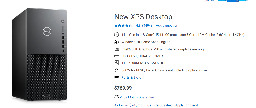Why aren’t motherboards mostly USB-C by now?



philip.greenspun.com
Why aren’t motherboards mostly USB-C by now?::I’m beginning to think that the Windows PC that I built in 2015 is ready for retirement (though if Joe Biden can be president at 78, maybe this PC can last until 2029?). In looking at new des…
You are viewing a single comment
While that is true, it does cause some headaches for end users. There's a (barely followed) code for differentiating the speeds of type-A connectors, but I'm not aware of any such system for type-C. Generally people expect a type-C connection to be full USB 3.2 or USB-4 speeds (not to mention the absolute state of the USB spec with them changing the nomenclature constantly). If you started putting USB 2.0 ports with type-C connectors you'd quickly find people complaining about that I'm sure.
Really, in the long term I'm sure in another CPU generation or two we'll have enough bandwidth to spare that manufacturers can start putting extra USB 3.2 or USB 4 controllers on the motherboards at which point they'll be able to replace most of the type-A ports with type-C without losing speed. In practice though I expect we'll see history repeating itself with "low" speed type-C ports and high speed type-C ports that support whatever the latest and greatest USB spec is, and no doubt some kind of distinguishing mark to differentiate them. We already see something like that with lightning, although that's just a little too proprietary to really cut it, we'll need to get something that's part of the USB spec itself.
Almost none of the alternate modes or advanced features are required for USB-C devices. Most smartphones don't support high data rates over their single USB-C port. There are are probably more USB-C ports using the USB 2.0 specs, for example peripheral devices like mice or keyboards. Beyond stuff like DisplayPort alternate mode, there still isn't a big demand for more than one or two USB-C ports with high data rates or the full feature set.
In USB-4 the only "alt" mode is Thunderbolt, which is basically PCI over a cable.
USB 4 has both PCIe and Display Port alternate modes. Not all USB-C ports are USB 4 though unfortunately.